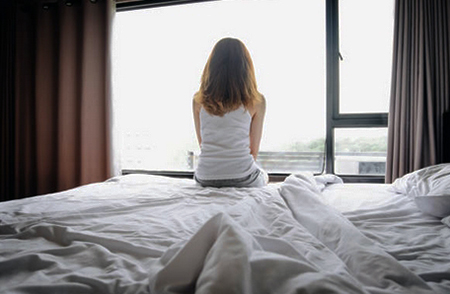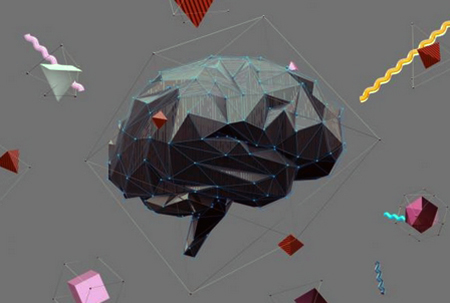What is endogenous depression and how it differs from other types of depression?


Who is not familiar with the concept of "depression" and did not find its signs in themselves? People commonly say that they have depression when they are in a bad mood and irritable. But such moods and emotions are natural and do not mean that a person suffers from depression in medical sense. One should start worrying about depression if he or she feels that the negative emotions became prevalent in them or their closed ones. Depression is the most widespread mental disorder, affecting about 350 million people worldwide.
Depression is a psychopathological syndrome in which mood changes from mild sadness to deep melancholy. Studies show that depression is diagnosed 2 times more often in women than in men. This is due to the peculiarities of the female psyche and the fact that they often turn to specialists for help.
How do you know if you have depression? In fact, depressed mood, lack of emotion, and lack of initiative are indeed considered some of the characteristics of depression. But that is not all.
Historically, depressions have been divided into psychogenic, organic and somatogenic, organic and endogenous.

- Psychogenic depression - occurs as a response to traumatic or negative life situations.
- Somatogenic depressions - develop with diseases of the body and as complications of medication. They are based on a certain disease that is a trigger for depression.
- Organic depression develops in brain lesions. Some scientists believe that organic brain diseases are a provoking factor in endogenous forms of depression, which appear in the absence of any apparent reason.
The latest research suggests that the list is of depression forms is expanding.
It happens that there is no underlying concomitant disease, but primary symptoms of depression are present. In such cases, endogenous form of depression is diagnosed.
Endogenous in translation from Greek means “caused by internal factors”. One of the hypotheses for endogenous depression explains its development by the malfunction in the brain.
The most common signs of illness are suicidal thoughts, apathy, and low self-esteem. A severe form of endogenous depression leads a person to unemotional states, indifference and a desire to die. At such moments, a person especially needs the support of loved ones. Moreover, unlike other types of depression, the symptoms worsen, as a rule, in the morning.
This type of depression can affect people of any age. Endogenous depression, a disease without an external cause, can occur with types of mental disorders such as epilepsy, cyclothymia, and bipolar disorder.
Stages of depressive disorder
Any depressive disorder can be divided into several stages:
- At the first stage, the disease is invisible to the patient. Mood swings appear, a person refuses their favorite activity, feels constant fatigue. What used to bring joy ceases to satisfy. Drowsiness appears, even though the person slept a sufficient amount of time at night. Professional activities that were habitual consume more energy and time.
Meeting with friends and communication ceases to interest a person. A tendency toward solitude appears. Clothes of dark, black shades begin to prevail in the wardrobe. Anxiety increases. There is irritation towards people, especially towards those who are optimistic.

- At the second stage, the production of serotonin, the hormone of happiness, practically decreases and stops. A person has prolonged insomnia, the appetite worsens and disappears. Can appear "voices in the head" and hallucinations. Controlling emotions is becoming more and more difficult. Person is still annoyed by other people, behavior becomes antisocial.
Chronic diseases are exacerbated, memory problems are aggravated, the ability to think logically and adequately is lost. In conversations, a person is tuned in to monologues, philosophical reflections, but often loses the meaning of the conversation.
This condition leads to suicidal thoughts. At this time, patients especially need the help of relatives and doctors.
- At the third stage, aggressiveness predominates in behavior. And although a person is indifferent and detached, they lose control and can inflict physical harm towards themselves and others. The mental illness worsens. At this stage, only a specialist psychiatrist can help a person with appropriate treatment.
As we can see, the illness of depression is much deeper than it seems at first glance. And in the modern world, its study is still ongoing.
Endogenous and psychogenic depression: differences
What is its difference of endogenous depression from common types of disease, which are characterized by external causes of the disease?
So, psychogenic depression is a reaction of the human psyche to external circumstances and factors. These are constant stressful situations, injuries, illnesses, deaths, a change of scenery, deterioration in financial situation and well-being.
Endogenous depression is characterized by the absence of a certain situation and is very rarely associated with trauma.
 With endogenous depression, experiences do not correspond to real situations. For example, a person is worried about a disease that they do not have. They feel tired in the absence of physical activity, complain of phantom pain. Thoughts revolve around a specific thing, and it is difficult to shift attention to doing something new. Speech and body movements become slow. There are feelings of depression, uselessness. Psychological and physiological activity is impaired. There is a delayed reaction to events and distraction.
With endogenous depression, experiences do not correspond to real situations. For example, a person is worried about a disease that they do not have. They feel tired in the absence of physical activity, complain of phantom pain. Thoughts revolve around a specific thing, and it is difficult to shift attention to doing something new. Speech and body movements become slow. There are feelings of depression, uselessness. Psychological and physiological activity is impaired. There is a delayed reaction to events and distraction.
Some of the first signs of endogenous depression are laziness, unreasonable fatigue and bouts of bad mood. They repeat at certain times of the year and often last for months.
Sleep in such people is disturbed, pessimism accompanies them during the day and night. The length of daylight affects hormonal activity. The season deepens the depressive state.
Psychogenic depression differs from endogenous depression based on a number of factors:
- With psychogenic depression, a person's mood worsens in the evening and there are difficulties with falling asleep. With endogenous depression, a person already wakes up with a bad mood in the morning, and in the evening hours some improvement in well-being is possible.
- If in the case of psychogenic depression there is a clear connection with a specific stressful situation. In endogenous depression such a connection is most often not traced. A stressful situation can be reflected only at the beginning of the phase of endogenous depression, but then the connection is lost.
- With psychogenic depression, a person can fully reproduce the events of the traumatic situation, but with endogenous depression, not. Psychogenic depression depends on the severity of stress, but there is no such correlation with endogenous depression.

- With psychogenic depression, a person is aware of the disease, but with endogenous depression, no.
- With endogenous depression, in contrast to psychogenic, mental inhibition is clearly expressed. Lowered self-esteem, ideas of little self-value, self-blame, despair, hopelessness are characteristic.
- In psychogenic depression, low mood is often accompanied by crying, affective reactions accompany anxiety and fear. With endogenous depression, they almost never cry, depersonalization (lack of emotion) is clearly expressed.
- Endogenous depression is associated with seasonality. It manifests itself in the spring-autumn period, depending on day length changes. In psychogenic depression, this relationship is not traced.
- With endogenous depression, there is no somatic background. It does not combine with bodily diseases.
For clarity, the difference between psychogenic depression and endogenous depression is presented in the form of comparative table:
Endogenous depression: causes
The causes of endogenous depression have not yet been precisely described.
Scientists consider biochemical disorders, a factor of heredity as such reasons. They talk about disorders at the cellular level, a malfunction of metabolic processes in the work of the brain, a malfunction in the endocrine system. If this failure has organic consequences, then psychotherapy is insufficient and drug treatment is crucial. If a physiological shift is irreversible and its consequences persist throughout a person's life, in this case they speak of an endogenous version of depression.

With a genetic predisposition, the ability to adapt is reduced and the production of neurotransmitters in the body (norepinephrine, serotonin, dopamine) - hormones of joy, pleasure and love - is impaired.
Decreased production of these hormones is the cause of the gloomy worldview of people with endogenous depression. This affects the increased emotionality of a person, even with minor stresses.
Stress and trauma, negative emotions can provoke another episode of depression, but they are not the main cause of it. They just affect the work of the hormonal and nervous systems. The development of depression is also promoted by the night work, violations of circadian rhythms, a lack of ultraviolet radiation.
Endogenous depression can often manifest itself in so-called workaholics, people with the tendency to hyperactivity, and perfectionism. The character of people with such depression is dominated by such traits as responsibility, anxiety, suspiciousness, insecurity.
Endogenous depression: treatment
For endogenous depression, an integrated approach is recommended. It is important and necessary to contact a specialist psychotherapist who will select the treatment and prescribe the appropriate therapy. The effectiveness of cognitive-behavioral psychotherapy has been scientifically proven.
Determination of the treatment strategy should be carried out taking into account the characteristics of the disease and the nature of the patient's personal characteristics.

Since the treatment is based on the use of medications, you should not try to cope with this disease on your own.
In drug treatment, antidepressants (for instance, Imipramine) and antipsychotics are used. In severe disease, tranquilizers and nootropics are used.
In case of a negative result, the method of simultaneous withdrawal of therapy can be used. And in the case of its ineffectiveness, electroconvulsive therapy is used.
In addition to psychopharmacotherapeutic measures, patients need psychotherapy.
It is important for the patient to realize the need to adapt to the disease, to the interests of others. It is imperative to understand the importance of changing from active therapy to supportive therapy. Psychotherapy will not cure this type of depression without medication.
Endogenous depression risk groups

Depression is one of the frequent causes of decreased performance and is a serious medical and social problem. When depressed, people may think that their mental discomfort is not a sufficient reason to see a specialist but it is not true. Only a comprehensive approach can solve the problem and let the patient to live a full and happy life.
People who are in a risk group for endogenous depression:
- Pregnant women and women who recently have given birth are more prone to depression. Due to the fact that it is not always possible for pregnant women and mothers to take medications, there are non-drug treatments for depression: psychotherapy, relaxation, sleep regulation, social support, light and music therapy.
- Adolescents;
- People with terminal illnesses and elderly people. In old age, loneliness, social disintegration, loss of loved ones, disabling somatic diseases, decreased cognitive functions and being in special institutions (hospitals, care institutions) contribute to depressive conditions and are risk factors. In this regard, it is necessary to pay attention to the elderly, provide them with social assistance and psychological support.
Patients very rarely seek help from specialists. But it's important to understand that depression isn't just a depressed mood. It is a psychological disease, and self-treatment usually does not work. The effectiveness of treatment depends on the correct diagnosis. It is necessary to follow the recommendations of the attending physician.
Post by: Emma Ager, MD, Copenhagen, Denmark
(Updated at Apr 13 / 2024)
Tofranil articles:
Some of the trademarks used in this Web Site appear for identification purposes only.
All orders are reviewed by a licensed physician and pharmacist before being dispensed and shipped.
The statements contained herein are not intended to diagnose, treat, cure or prevent disease. The statements are for informational purposes only and is it not meant to replace the services or recommendations of a physician or qualified health care practitioner. If you have questions about the drugs you are taking, check with your doctor, nurse, or pharmacist.